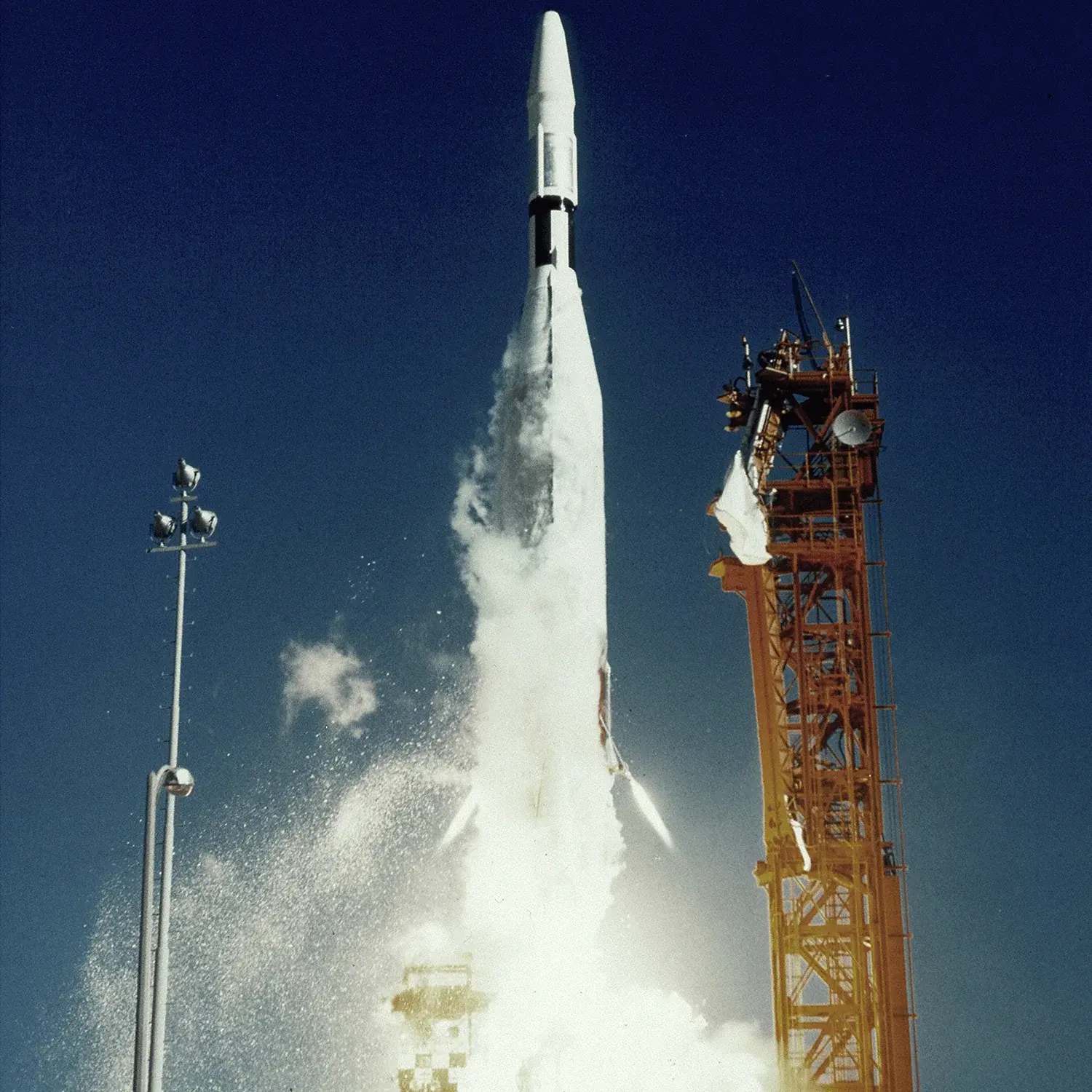Ranger 6
Launch Success
Liftoff Time (GMT)
15:49:00
Thursday January 30, 1964
Watch Replay
24/7 Coverage
Mission Details
Ranger 6
Ranger 6 was a lunar probe in the Ranger program, a robotic spacecraft series launched by NASA in the early and mid-1960s to obtain the first close-up images of the Moon's surface. It was designed to achieve a lunar-impact trajectory and to transmit high-resolution photographs of the lunar surface during the final minutes of flight up to impact. The spacecraft carried six television vidicon cameras - two wide-angle (channel F, cameras A and B) and four narrow-angle (channel P) - to accomplish these objectives. The cameras were arranged in two separate chains, or channels, each self-contained with separate power supplies, timers, and transmitters so as to afford the greatest reliability and probability of obtaining high-quality television pictures. No other experiments were carried on the spacecraft. Due to a failure of the camera system, no images were returned.
Trans Lunar Injection
1 Payload
381 kilograms
Rocket

Launch Site
Stats
Atlas-Agena
33rd
Mission
1st
Mission of 1964
1964
7th
Orbital launch attempt
